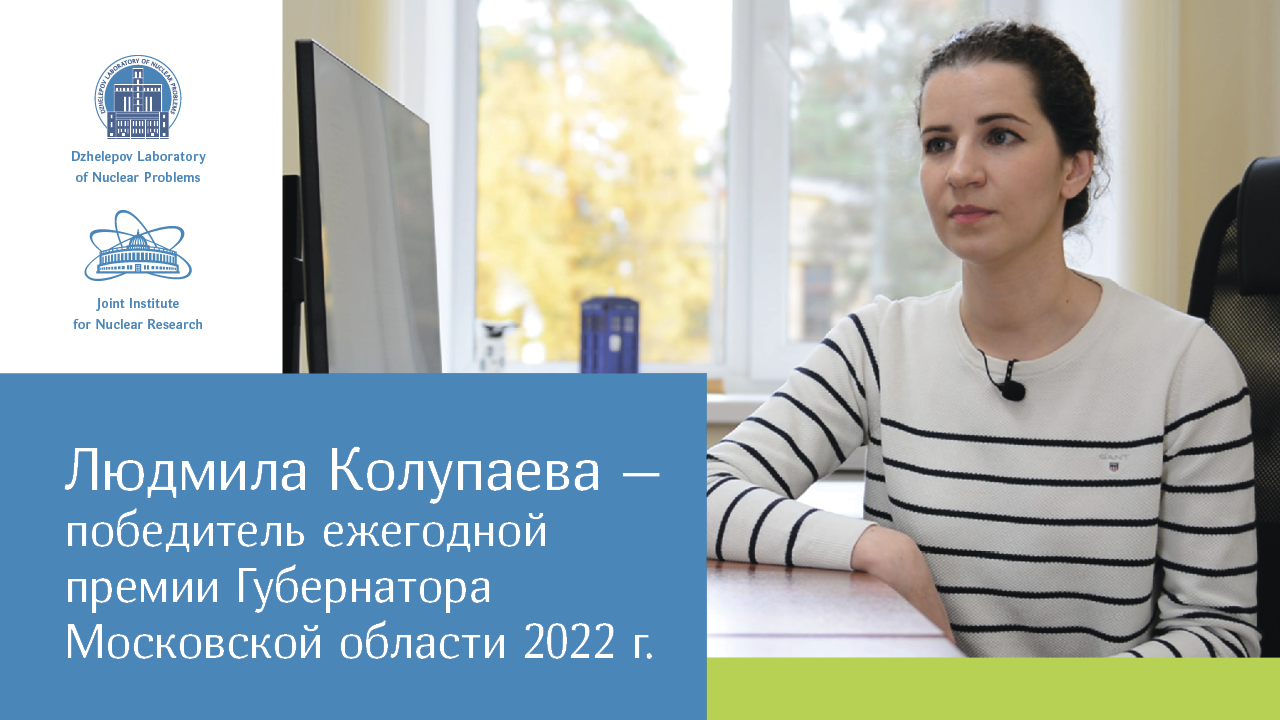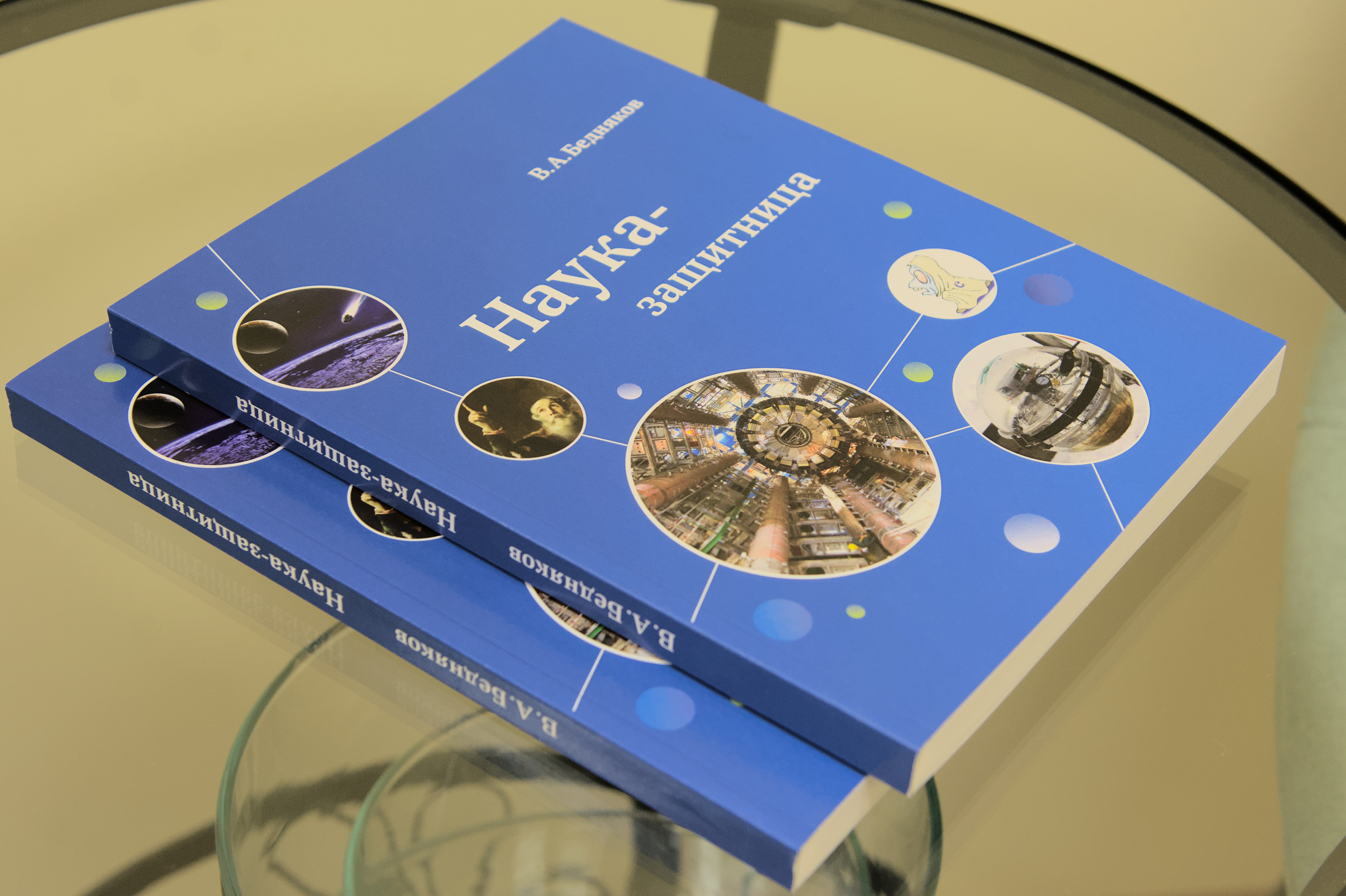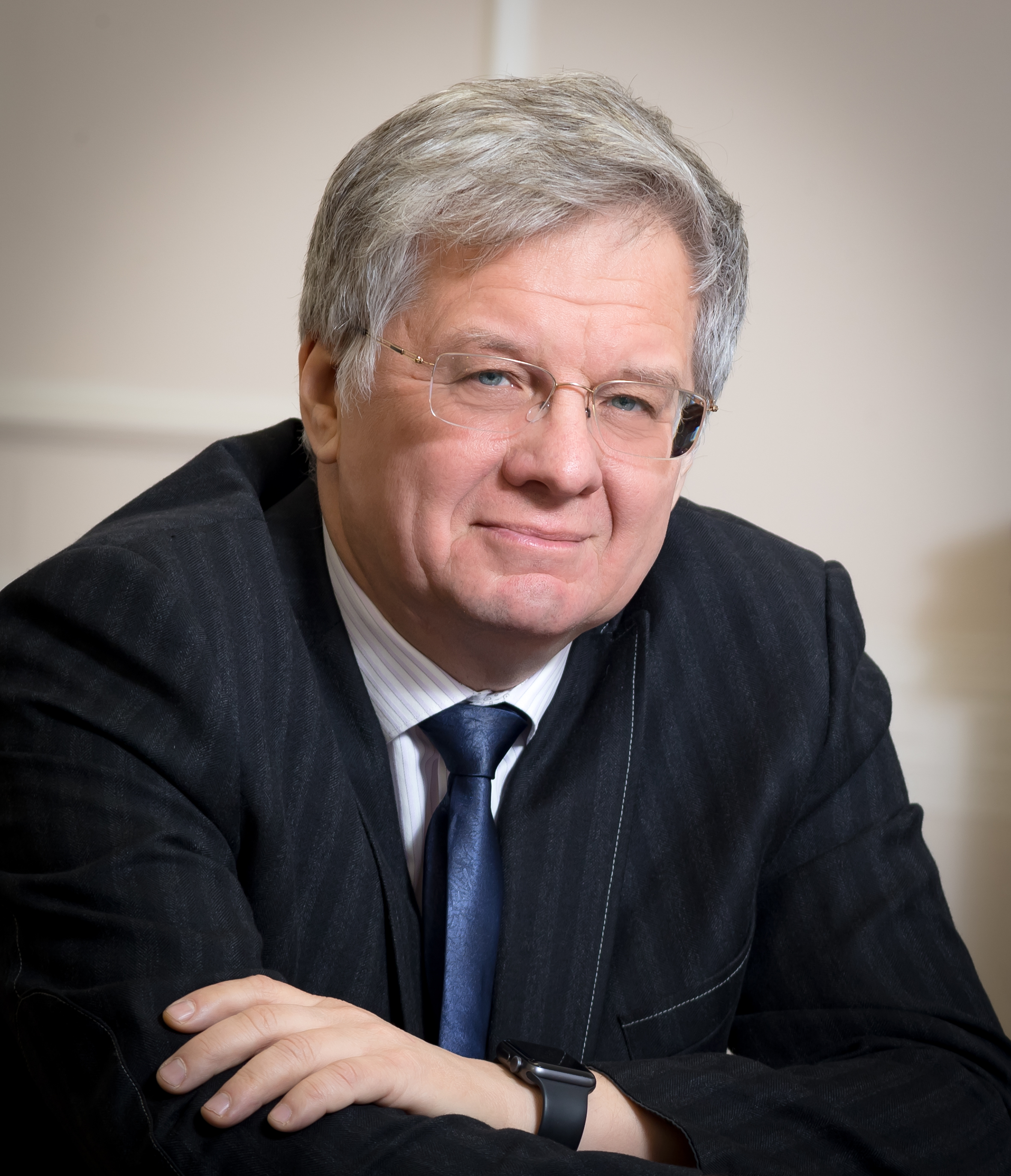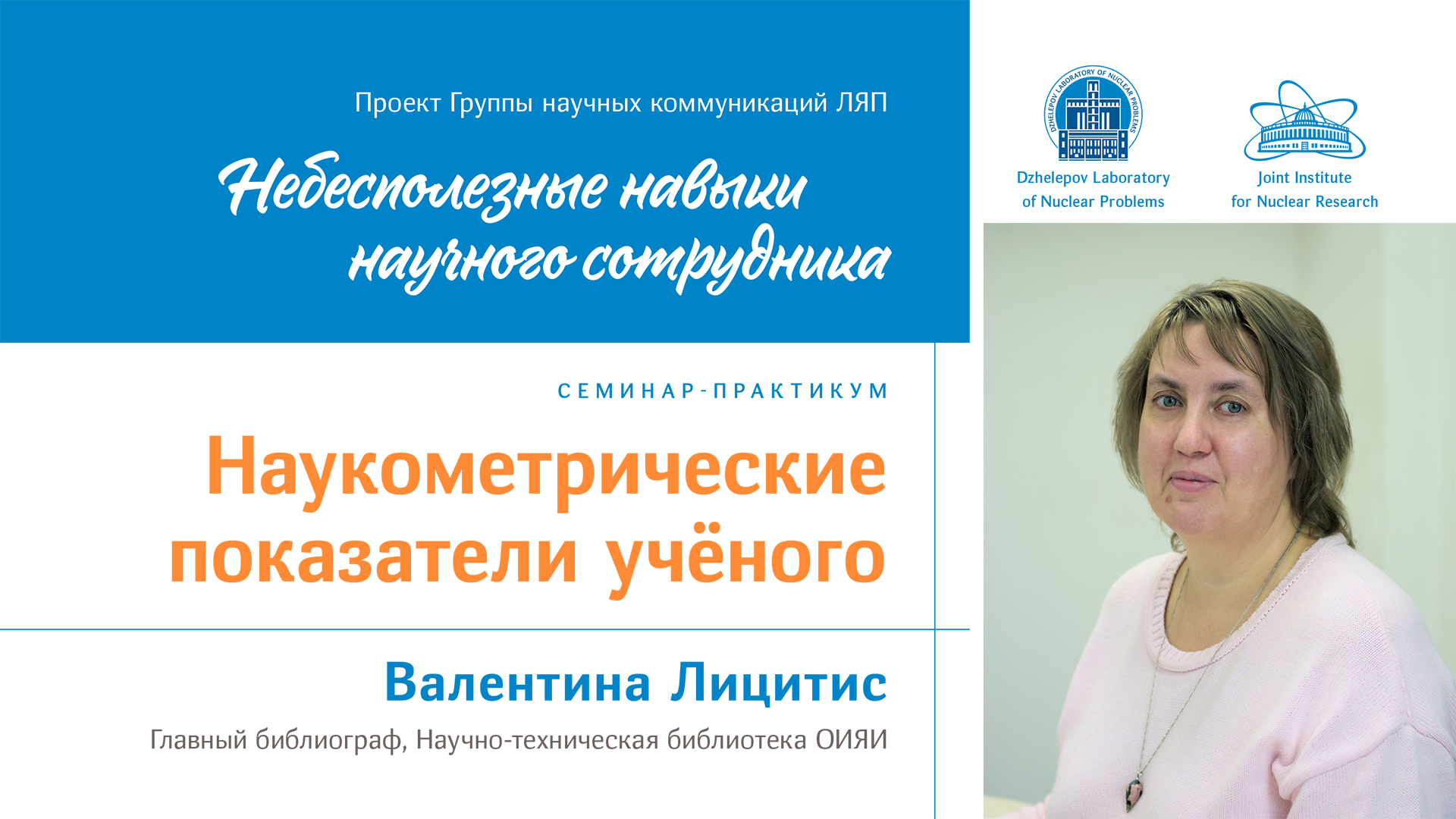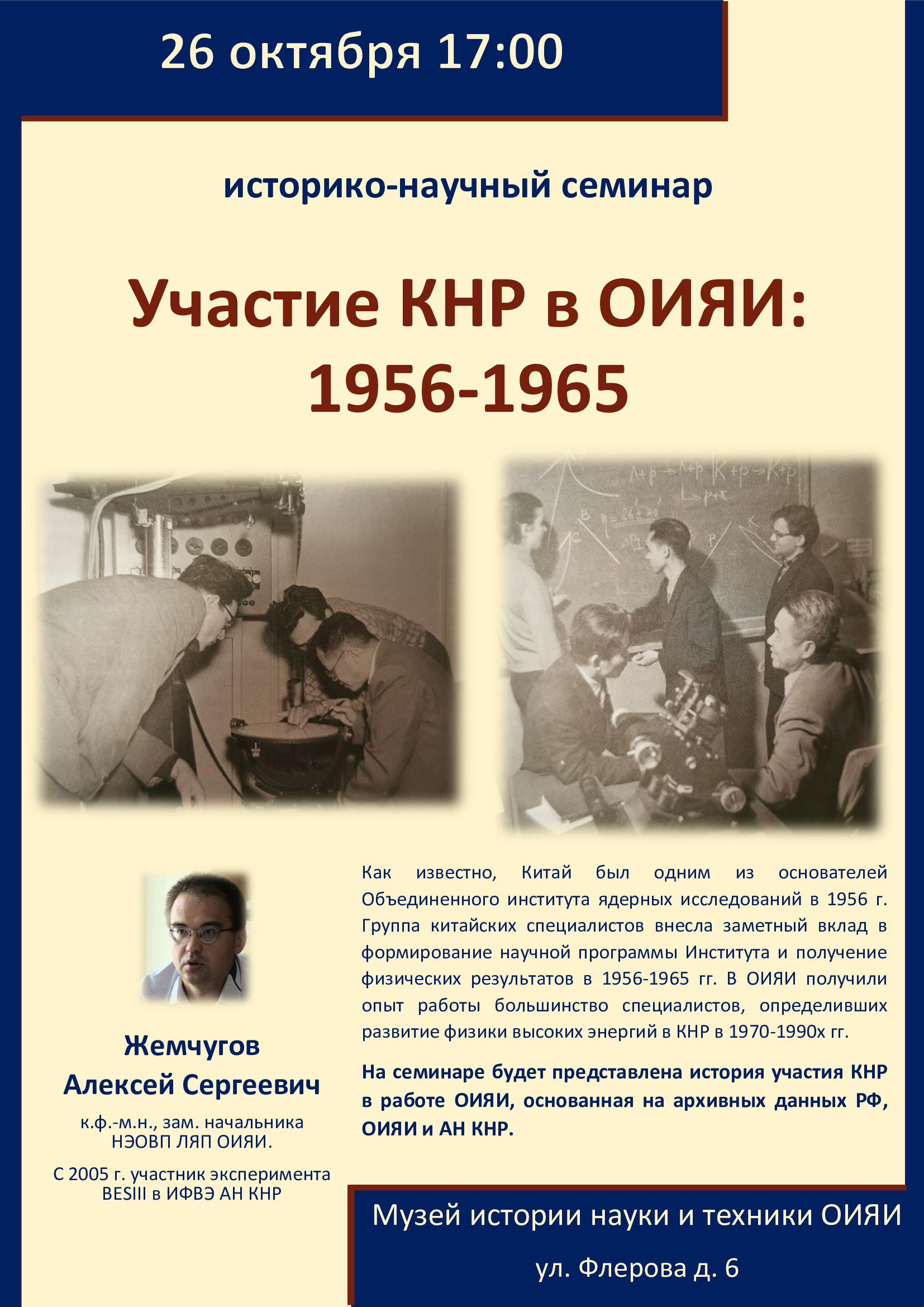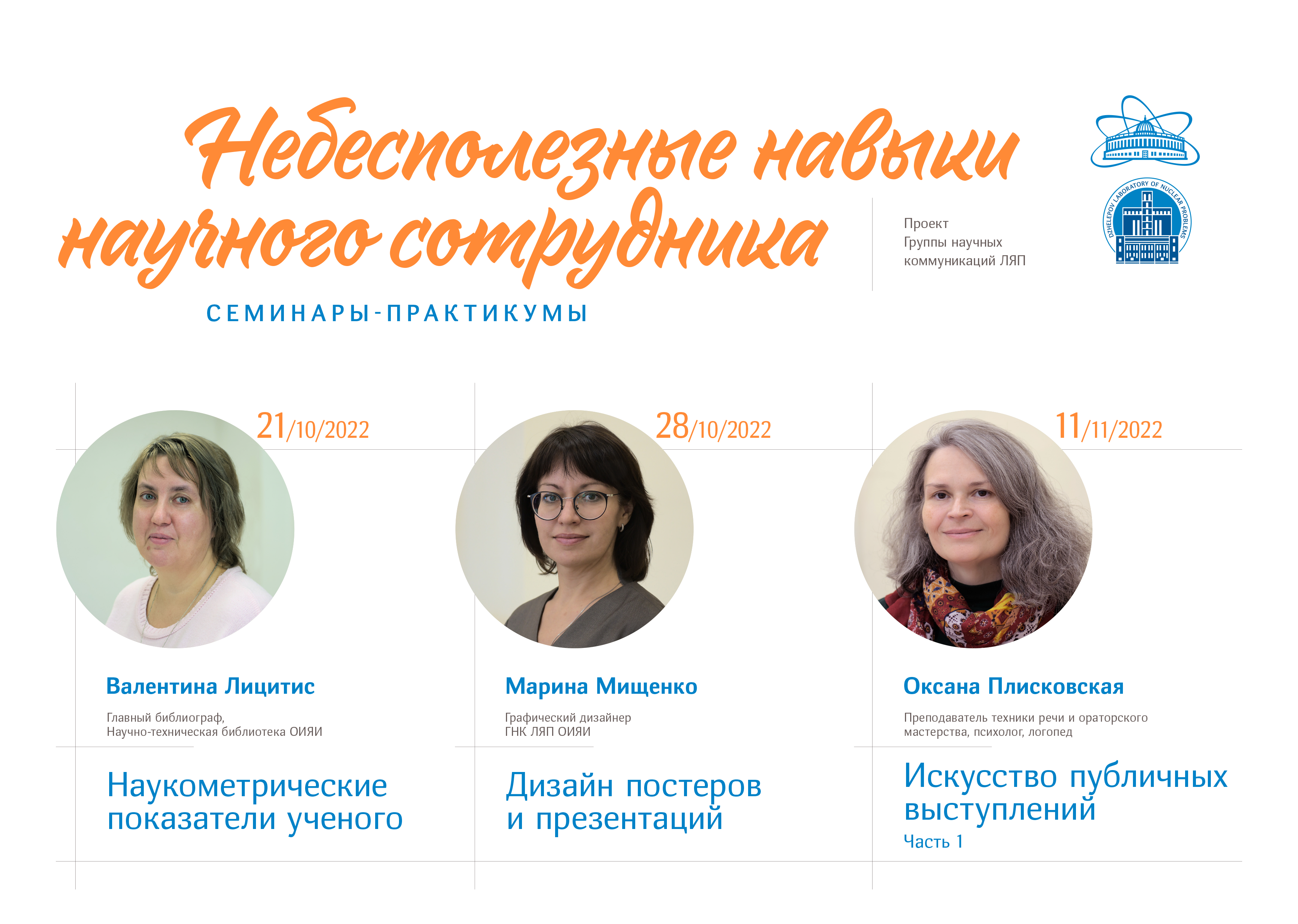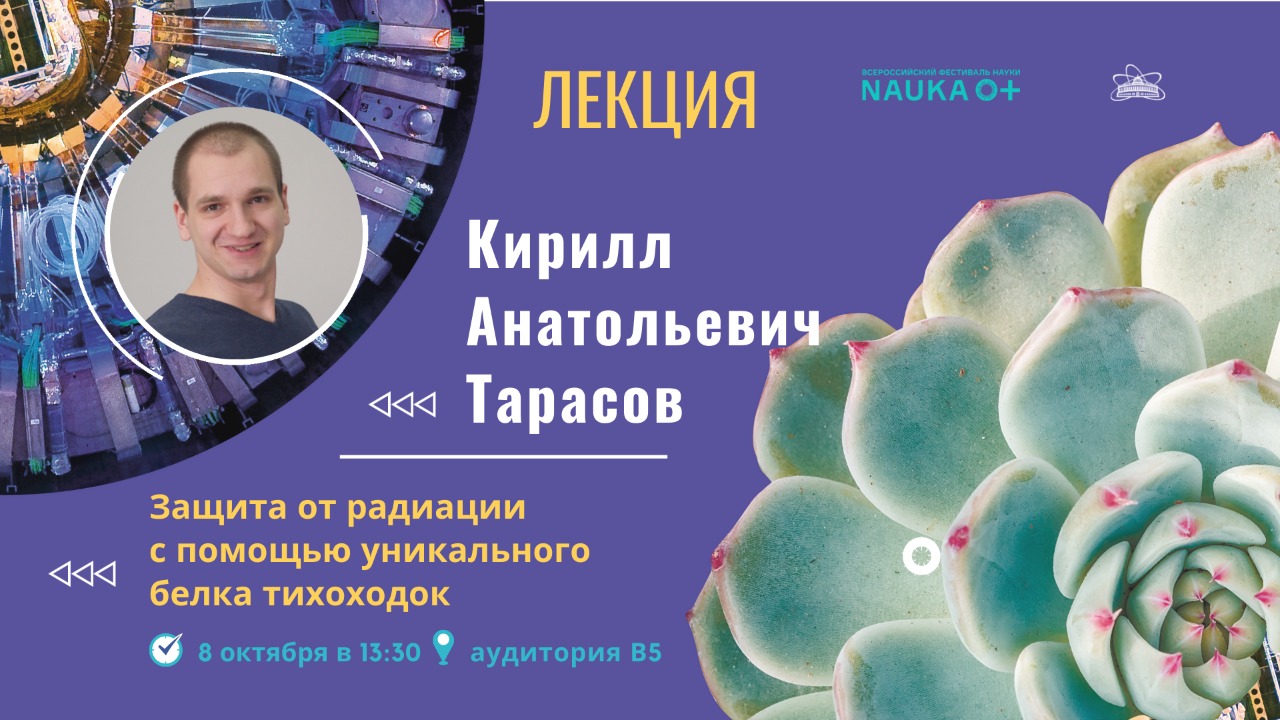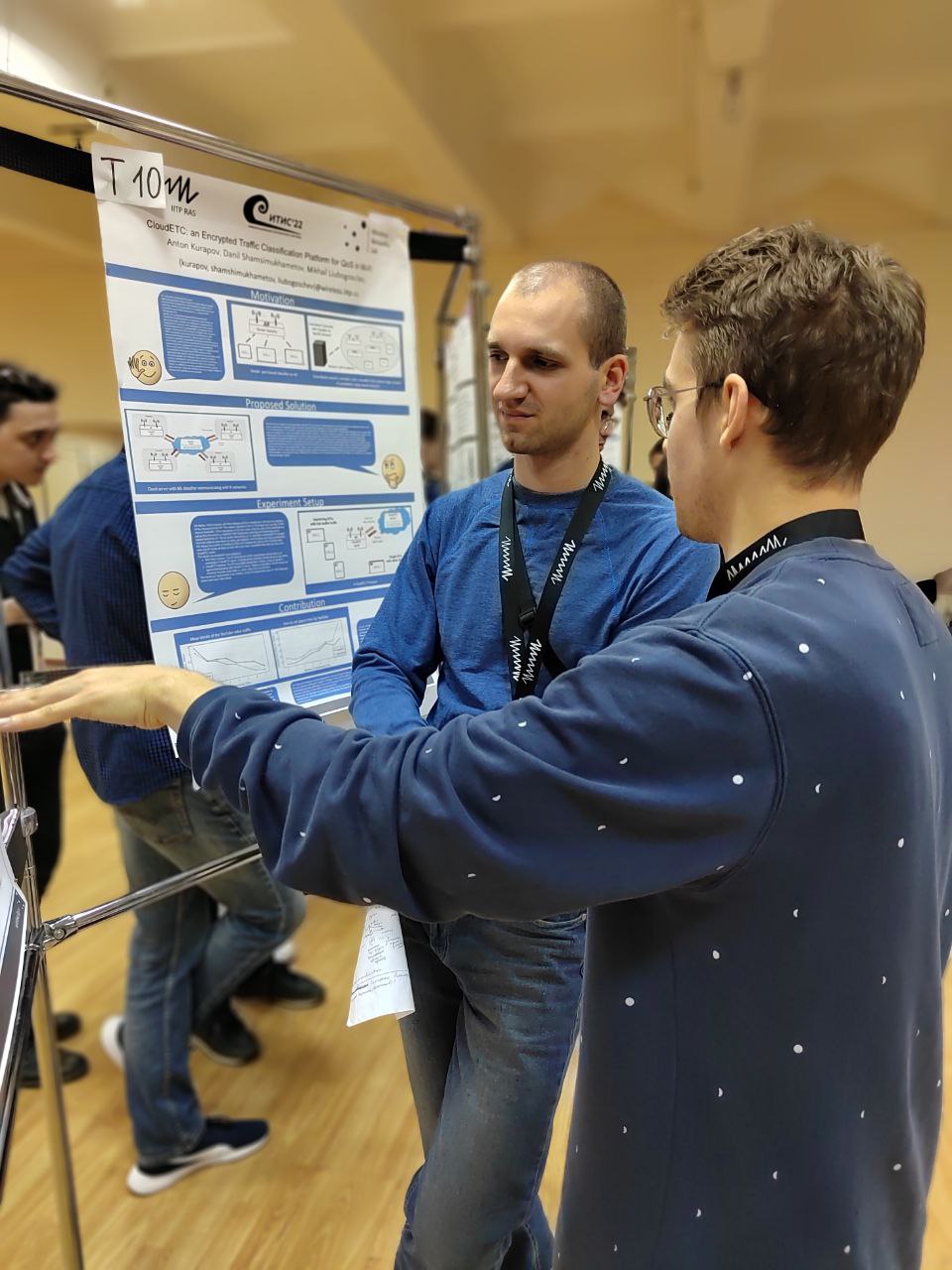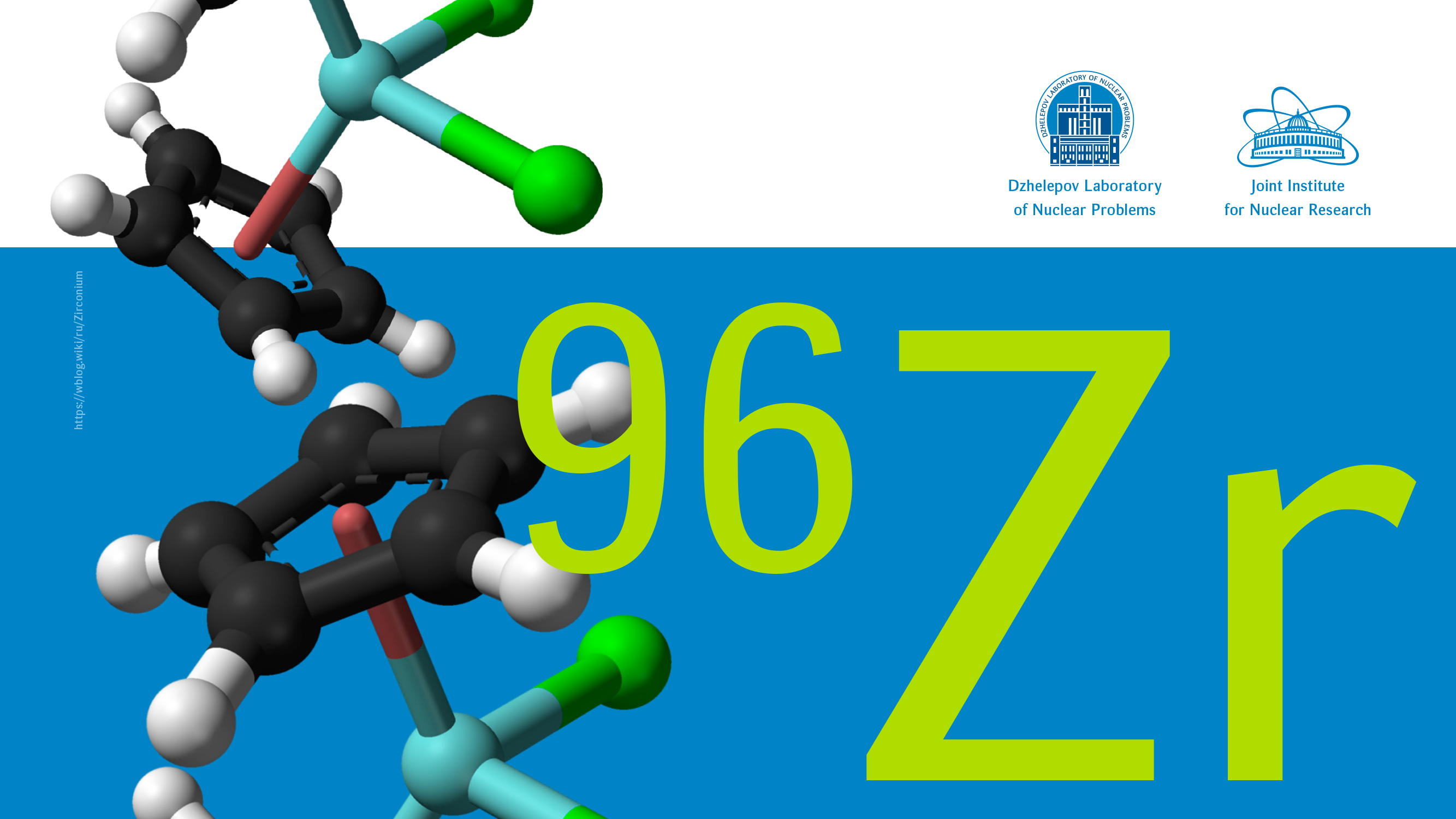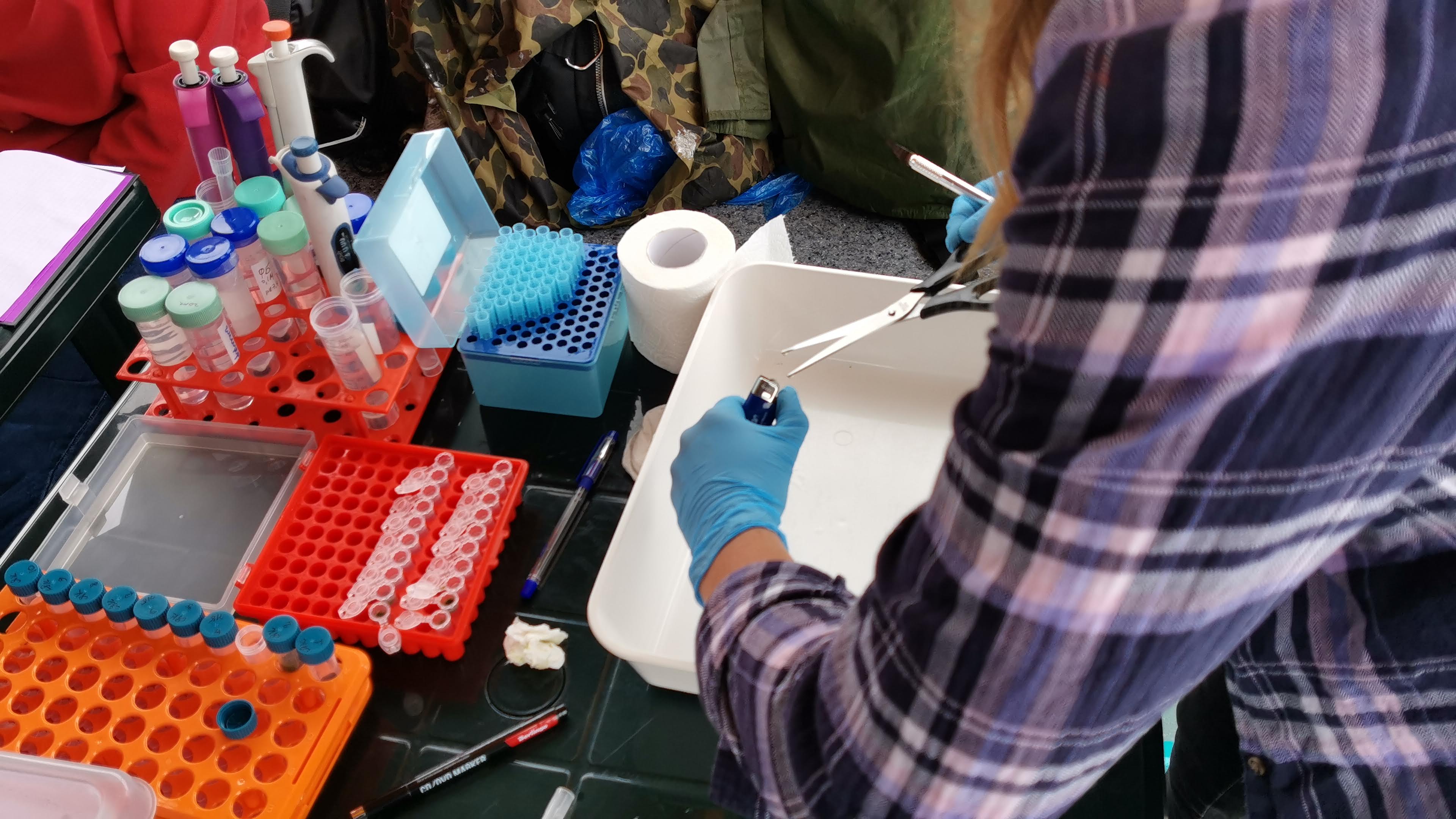News
04.11.2022
Liudmila Kolupaeva, Cand. Sci. (Phys.-Math.), a research scientist of the DLNP Experimental Department of Particle Physics is talking about her work on measuring neutrino oscillation parameters in the NOvA experiment (Fermilab, the US) for which she was awarded the 2022 Prize of the Governor of the Moscow Region for young scientists and specialists in the fields of science, technology, engineering, and innovations.
31.10.2022
The book “Protecting Power of Science” by Vadim Aleksandrovich Bednyakov was issued at the JINR Publishing Department. It includes collected popular science articles written by the author during different stages of his life. Here he deals with burning issues of the present day and ponders over the place of science in the modern world. He reflects on outcomes of scientific search and comes to the conclusion that both developing the scientific picture of the world and establishing the basis for comfortable and safe life on our planet are of significance for humanity.
27.10.2022
On October 31, 2022, Vadim Aleksandrovich Bednyakov, Director of the Dzhelepov Laboratory of Nuclear Problems, Dr. Sci. (Phys.−Math.), is turning 65.
In 1981, he graduated with honours from the MSU Faculty of Physics and was assigned as a trainee researcher to the theoretical Sector of the Department of Particle Physics of the Laboratory of Nuclear Problems. In 1985, he became a junior researcher, in 1985 he defended his candidate dissertation, and in 2001 he headed this Sector.
26.10.2022
Scientometrics, its goals, objectives, and functions. Overview of the main scientometric indicators of the Web of Science Core Collection, Scorpus, Russian Science Citation Index datasets. Their correct and incorrect use. Author’s identifiers and profiles – ORCID, Publons Research ID, Scopus Author ID, SPIN code of the Russian Science Citation Index − as a tool for visualization and increase in recognition of papers of a researcher. Obtaining and creating author’s identifiers and profiles.
25.10.2022
On Wednesday, October 26, at 17:00, the seminar “Participation of the People’s Republic of China at JINR in 1956−1965” will be given at the JINR Museum of Science and Technology by Alexey Zhemchugov, Cand. Sci. (Phys.-Math.), the deputy head of the DLNP Experimental Department of Colliding Beams. The seminar is devoted to the history of participation of the People’s Republic of China in establishing JINR and its activities.
The People’s Republic of China was one of the JINR founding countries. The group of Chinese specialists contributed a lot to shaping the JINR Scientific Programme and getting physical results in 1956−1965. The major part of specialists who developed high-energy physics in China in 1970−1990 gained their experience at JINR.
Alexey Zhemchugov has been involved in the Chinese BESIII experiment at the Institute of High-Energy Physics of the Chinese Academy of Sciences (CAS) since 2005. The history of China’s participation at JINR based on archive materials of the RF, JINR, and CAS will be presented at the seminar.
21.10.2022
The MEG II experiment with muon beams is being conducted at the Paul Scherrer Institute (PSI) not far from Zürich (Switzerland). MEG II is the second stage of the MEG experiment which finished data acquisition in 2013. The MEG experiment was aimed at the search for neutrinoless decay of the positively charged muon into a positron and a gamma-quantum. This process is highly sensitive to manifestations of New Physics – within the Standard Model, it is impossible at the levels of tree diagrams and hardly probable (less ) due to loop diagrams with allowance for lepton mixing.
17.10.2022
The Group of Scientific Communication of the Dzhelepov Laboratory of Nuclear Problems launches a series of training seminars “Lifehacks of Some Use for a Scientist”. The seminars will be held at the DLNP conference hall on Fridays at 11:00 am. Specialists from different fields of knowledge will be talking about scientometric indicators and their correct use, about the basics of design of posters and presentations, how to get prepared for public speaking, how to overcome anxiety in front of the audience. And also, about some secrets of self-editing, some features of the English scientific literature…
12.10.2022
We heartily congratulate Aleksandr Kolesnikov and Liudmila Kolupaeva, young researchers from our laboratory, on being awarded the 2022 Prize of the Governor of the Moscow Region intended for early-career scientists engaged in the fields of science, technology, engineering, and innovations! We are proud of them and wish them new scientific achievements!
07.10.2022
From 7 to 9 October, the All-Russian Festival NAUKA 0+ will be held in Moscow. The festival is aimed at explaining in a clear and simple way what science is, what scientists do, how scientific search improves the quality of life, and what prospects it opens for a modern society. The festival is intended to communicate science to a wide audience and to present the most recent scientific achievements. The slogan of the 2022 festival is “Creating Future”.
07.10.2022
From 2 to 6 October 2022, the 46th interdisciplinary conference “Information Technologies and Systems” (ITaS) took place in the park hotel Ognikovo located in the Istrinsky District of the Moscow Region. It was organized by the A. A. Kharkevich Institute for Information Transmission Problems of the Russian Academy of Sciences (IITP RAS).
12.09.2022
Unique Zr-96 isotope samples were delivered to the Joint Institute for Nuclear Research (JINR) by the Izotop company, an integrator of the Rosatom State Corporation in the field of turnover and promotion of isotope products. Isotopes Zr-96 produced by the PO EHZ company (Rosatom’s plant) will be used in investigations of fundamental properties of neutrinos.
06.09.2022
Scientists from the Joint Institute for Nuclear Research (JINR, Dubna), along with specialists from the Limnological Institute of the Siberian Branch of the Russian Academy of Sciences (LI SB RAS, Irkutsk) and from the University of Bucharest (Romania), have examined elemental composition of Baikal sponges collected in areas with different anthropogenic load. It turned out that sponges can be successfully used as bioindicators of toxic element pollution in Lake Baikal. The results were published in the journal Marine Pollution Bulletin.


